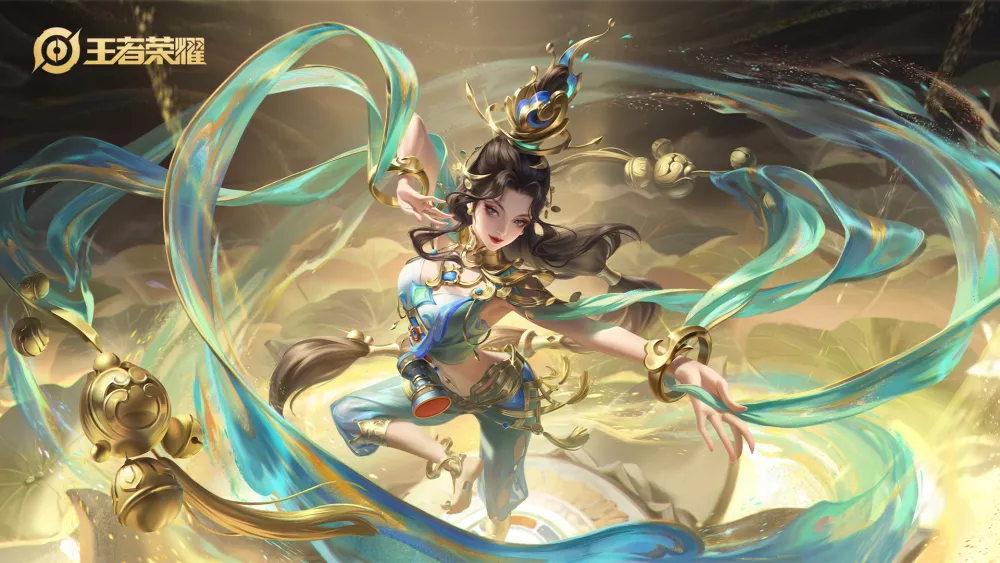Case Study: Brand Collaboration in Honor of Kings
Honor of Kings has emerged as a phenomenon in China’s mobile gaming scene in recent years. On October 26, 2024, its official Weibo account announced that over 100 million players logged in to celebrate the game’s ninth anniversary. This indicates that even in its ninth year, the game maintains a daily active user (DAU) count of hundreds of millions. According to AppMagic, in September 2024, Honor of Kings topped the revenue charts for iOS mobile games in China, generating $140 million in in-app purchases.
Today, cross-industry collaboration has become a standard in brand marketing. Many brands are actively exploring opportunities in this space, with popular esports gaming IPs boasting massive fan bases being among the most sought-after partners. Since 2017, Honor of Kings has established numerous collaborations with brands across various industries, such as L’Oréal, Erke, Joyoung, Nestlé, and Huawei. The game has also forged deeper partnerships with well-received cultural IPs, including the Journey to the West TV series, SNK, and the Dunhuang Academy to align with trends favoring personalization, high quality, and cultural depth.
Honor of Kings has effectively leveraged different co-branding strategies, including ingredient branding, cooperative branding, and complementary branding, to build robust brand equity with its partners. One collaboration I personally admire is the partnership between Honor of Kings and the Dunhuang Academy, which resulted in the release of four uniquely designed skins.
Impact on Consumers
For consumers, the collaboration between the Honor of Kings and the Dunhuang Academy introduces young enthusiasts of traditional culture and museums to the richness of Dunhuang culture, ensuring its broader dissemination and better preservation. The game skins, resembling art pieces, draw inspiration from the Flying Apsaras murals, the "Nine-Colored Deer Jataka" in Mogao Cave 257, and the "Medicine Buddha Sutra Transformation" in Mogao Cave 220. They incorporate elements from ancient musical instruments, traditional paintings, and modern intangible cultural heritage. Amid the rise of Chinese cultural trends, Dunhuang culture, with its mystique and artistic richness, satisfies the public's growing appetite for Chinese heritage while addressing consumers' psychological needs to cultivate cultural sophistication.
Impact on Honor of Kings
For Honor of Kings, the collaboration seized the “Dunhuang fever” trend, significantly boosting its visibility, engagement, and virality. By integrating culture, the MOBA game’s contemporary gaming culture interacts with traditional Chinese aesthetics, resulting in a vibrant, new brand culture at the intersection of the two. Through this collaboration, Honor of Kings enriches its cultural depth, establishes a fresh cultural identity in players’ minds, and breaks free from its original brand boundaries, thereby advancing the Honor of Kings IP universe.
Impact on the Dunhuang Academy
For the Dunhuang Academy, collaborating with one of the most popular mobile games in China is equally impactful. Their partnership with Honor of Kings has steadily deepened, focusing on digital tourism and guiding the public along the Silk Road to give Dunhuang culture a fresh, modern identity. By utilizing video games as a platform, Dunhuang culture reaches a broader audience, further extending its cultural legacy.
My Views
I believe Honor of Kings achieves a synergistic marketing goal of "1+1 > 2" by collaborating with brands in distinct industries or with complementary brand values. While maintaining its original market base, it effectively integrates the audience bases of its partners, creating mutual benefits and resource-sharing opportunities for both brands.
Based on the Honor of Kings and Dunhuang Academy case, brands must evaluate several key factors when selecting appropriate collaboration partners:
1. Alignment of Values and Positioning
The partner’s stance and values are critical to the success of the collaboration. Brands that align with current societal trends and enjoy policy support are more likely to ensure market acceptance. For instance, the collaboration between Honor of Kings and Dunhuang Academy resonated with the “cultural revival” trend, making the partnership highly relevant and appealing to the public.
2. Complementary Value Proposition
For brands with a significant market share, leveraging complementary strengths is essential in a partnership. For example, Honor of Kings introduced Dunhuang Academy to a broader audience of potential enthusiasts, while Dunhuang's rich artistic style added cultural heritage to the game. Brands should identify and address their weaker areas by prioritizing resource or audience group complementarities in their collaboration strategy.
3. Brand Image and Positioning
Collaboration partners must align with the brand’s image and positioning. Shared or similar brand philosophies enable quicker access to the partner’s audience, reducing the cost and difficulty of expanding market reach. This synergy also helps establish credibility and creates a seamless integration of brand identities.
4. Strategic Use of Promotional Content
The selection and design of promotional materials during the collaboration are crucial. It’s important to ensure a balanced representation of both brands while building distinct and shared brand equity. For instance, incorporating visual and thematic elements from both brands, like the integration of Dunhuang elements into Honor of Kings skins, highlights the partnership’s uniqueness while reinforcing the individual identities of each brand.



This case study on the collaboration between Honor of Kings and the Dunhuang Academy is a compelling example of how cross-industry partnerships can lead to cultural enrichment and brand enhancement. It is a win-win tale where Honor of Kings scores points for cultural depth and the Dunhuang Academy gains a trendy new audience. One more thing, if the article could include some screenshots of in-game cultural elements, it would help us understand the specific outcomes of the collaboration more visually.
ReplyDeleteThank you so much for your advice!!!!!
ReplyDelete